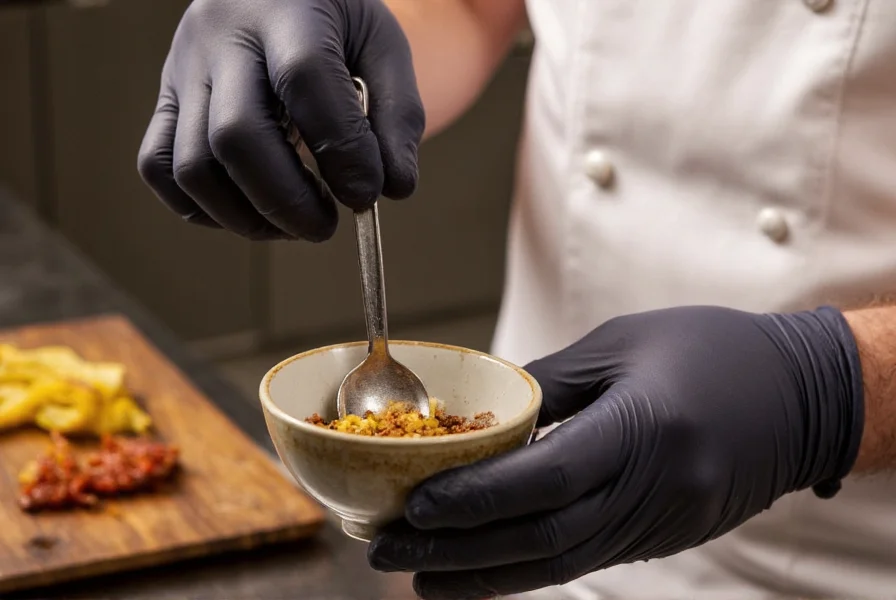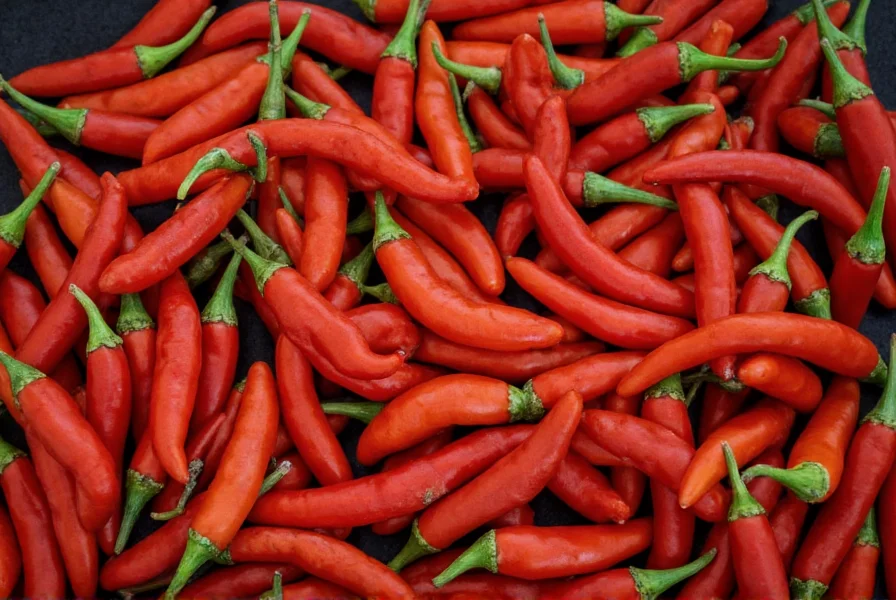When you encounter ghost pepper ranch on a menu or grocery shelf, you're dealing with one of the most potent commercially available spicy condiments. Unlike standard hot sauces, this hybrid leverages the cooling effect of ranch dressing to temper the ghost pepper's extreme heat while maintaining its distinctive floral undertones. Understanding how to properly use this fiery creation prevents culinary disasters while maximizing its unique flavor potential.
Understanding Ghost Pepper Heat Levels
The ghost pepper (Bhut Jolokia) ranks among the world's hottest chili peppers, officially measured between 855,000 and 1,041,000 Scoville Heat Units (SHU). To put this in perspective:
| Condiment | Scoville Heat Units | Heat Comparison |
|---|---|---|
| Ghost Pepper Ranch | 10,000-50,000 SHU | 5-20 times hotter than jalapeño |
| Pure Ghost Pepper | 855,000-1,041,000 SHU | 200+ times hotter than jalapeño |
| Standard Ranch Dressing | 0 SHU | No heat |
| Sriracha | 1,000-2,200 SHU | 2-5 times hotter than jalapeño |
The ranch base significantly reduces the raw heat while preserving the ghost pepper's complex flavor profile. Most commercial ghost pepper ranch products range from 10,000 to 50,000 SHU—still substantially hotter than standard hot sauces but manageable for heat enthusiasts. The buttermilk, garlic, and herbs in ranch dressing create a cooling counterpoint that makes the heat more approachable than straight ghost pepper sauce.
Flavor Profile Beyond the Burn
Ghost pepper ranch offers more than just heat—it delivers a distinctive flavor journey. The initial taste presents the familiar tangy, herbaceous notes of quality ranch dressing, followed by a gradual build of heat that peaks around 30-45 seconds after consumption. Unlike simpler hot sauces, ghost pepper ranch reveals subtle floral and slightly sweet undertones characteristic of Bhut Jolokia peppers before the intense heat fully registers.
This complex progression makes it particularly valuable in culinary applications where you want heat with dimension rather than单纯的 burning sensation. The cooling dairy elements provide temporary relief while the capsaicin continues to build, creating a layered eating experience that keeps heat seekers coming back for more.

Practical Culinary Applications
Knowing how to properly incorporate ghost pepper ranch into your cooking prevents overwhelming dishes while maximizing its unique properties. Consider these effective usage strategies:
- Dipping sauce enhancement: Mix with equal parts regular ranch to create a more approachable dipping sauce for chicken tenders, fries, or onion rings
- Burger booster: Apply sparingly as a spread—½ teaspoon per burger provides noticeable heat without dominating other flavors
- Marinade component: Combine with yogurt or buttermilk to create spicy marinades for chicken or pork (use 1-2 tablespoons per cup of base)
- Cocktail mixer: Add small amounts to bloody marys or micheladas for complex heat
- Potato topper: Drizzle over baked potatoes after cooking to preserve the sauce's flavor integrity
Professional chefs often use ghost pepper ranch as a finishing sauce rather than a cooking ingredient, as high heat can degrade both the ranch's texture and the pepper's nuanced flavor profile. The optimal serving temperature is chilled but not ice-cold, which allows the full flavor complexity to emerge.
Safety Considerations for Handling
Working with ghost pepper ranch requires precautions due to the capsaicin concentration. Even diluted in ranch dressing, ghost pepper residue can cause significant irritation. Follow these safety guidelines:
- Always wear disposable gloves when handling pure ghost pepper products
- Avoid touching your face, especially eyes, during and after handling
- Use dedicated utensils that won't transfer residue to other foods
- Store in clearly labeled containers away from regular condiments
- Keep dairy products nearby (milk, yogurt) as capsaicin antidotes
If you experience skin irritation, wash the affected area with soap and cool water, then apply milk or yogurt to neutralize the capsaicin. For eye exposure, flush with cool water for 15 minutes and seek medical attention if irritation persists. Remember that ghost pepper compounds can remain active on surfaces for weeks, so thorough cleaning of preparation areas is essential.

Creating Your Own Ghost Pepper Ranch
For those who prefer custom heat levels, homemade ghost pepper ranch offers control over ingredients and spiciness. Here's a basic recipe that balances heat with flavor:
Ghost Pepper Ranch Recipe
Yields approximately 1 cup
- ½ cup high-quality ranch dressing (preferably buttermilk-based)
- 1-2 teaspoons ghost pepper powder (adjust for heat preference)
- 1 small fresh ghost pepper, seeds removed, finely minced (for advanced users)
- 1 teaspoon garlic powder
- ½ teaspoon onion powder
- 1 tablespoon fresh dill, finely chopped
- 1 tablespoon fresh parsley, finely chopped
- 1 teaspoon lemon juice
- 2 tablespoons buttermilk (for consistency adjustment)
Mix all ingredients thoroughly in a bowl. Refrigerate for at least 2 hours to allow flavors to meld. Start with minimal ghost pepper and gradually increase to achieve desired heat level. Store in an airtight container in the refrigerator for up to one week. Note that homemade versions will have more variable heat levels than commercial products due to natural pepper variations.
Commercial Product Selection Tips
When selecting store-bought ghost pepper ranch, look for these quality indicators:
- Real buttermilk as a primary ingredient rather than sour cream base
- Ghost pepper listed among the first five ingredients
- Absence of artificial colors (natural reddish hue from peppers)
- Reputable hot sauce or specialty condiment manufacturer
- Clear heat level indication (mild, medium, hot)
Reading customer reviews can provide valuable insights about actual heat levels, as labeling standards vary significantly between brands. Many specialty food stores now offer sampling stations for hot sauces, allowing you to test heat levels before purchasing. For first-time users, selecting a product labeled "mild" or "medium" ghost pepper ranch provides a more accessible introduction to this intense condiment.
Heat Tolerance Building Strategies
If you're new to extreme heat condiments, developing tolerance to ghost pepper ranch requires patience. Rather than diving straight into full-strength applications, follow this progression:
- Start with ¼ teaspoon mixed into ½ cup regular ranch dressing
- After 3-5 exposures, try ½ teaspoon per ½ cup
- Gradually increase concentration over several weeks
- Pair with cooling foods like avocado, cucumber, or dairy
- Always have milk or yogurt available as a heat neutralizer
This gradual approach allows your taste buds to adapt while minimizing discomfort. Remember that heat tolerance varies daily based on factors like stress levels, fatigue, and recent food consumption. Never feel pressured to consume more than you're comfortable with—respecting your personal heat threshold ensures a positive experience with this intense condiment.
Frequently Asked Questions
How hot is ghost pepper ranch compared to regular hot sauce?
Ghost pepper ranch typically ranges from 10,000-50,000 Scoville Heat Units, making it 5-20 times hotter than jalapeños and significantly hotter than standard hot sauces like Tabasco (2,500-5,000 SHU) or Sriracha (1,000-2,200 SHU). The ranch base tempers the extreme heat of pure ghost pepper (855,000-1,041,000 SHU) while maintaining noticeable spiciness.
What's the best way to reduce the heat of ghost pepper ranch?
The most effective method is mixing with equal parts regular ranch dressing or Greek yogurt. Dairy products containing casein protein neutralize capsaicin, the compound responsible for heat. For immediate relief during consumption, drink cold milk or eat yogurt. Avoid water, which spreads capsaicin rather than neutralizing it. When cooking, adding acidic components like lime juice can also help balance extreme heat.
Can you cook with ghost pepper ranch or should it be used only as a finishing sauce?
Ghost pepper ranch works best as a finishing sauce rather than a cooking ingredient. High heat degrades both the ranch dressing's texture and the ghost pepper's complex flavor profile. If incorporating into cooked dishes, add it after cooking is complete to preserve its distinctive characteristics. For marinades, combine with yogurt or buttermilk and limit cooking time to prevent flavor degradation.
How long does homemade ghost pepper ranch last in the refrigerator?
Homemade ghost pepper ranch maintains optimal quality for 5-7 days when stored in an airtight container in the refrigerator. The fresh ingredients, particularly dairy components, begin to degrade after this period. Commercial products typically last 2-3 weeks after opening due to preservatives. Always check for signs of spoilage including separation, sour smell, or mold before using.
What are the best foods to pair with ghost pepper ranch?
Ghost pepper ranch pairs exceptionally well with foods that provide textural contrast and cooling properties. Ideal pairings include crispy chicken tenders, sweet potato fries, buffalo cauliflower, grilled corn, and baked potatoes. The creaminess balances the heat while the crispy elements provide textural interest. Avoid pairing with already spicy foods, which can create overwhelming heat levels.











 浙公网安备
33010002000092号
浙公网安备
33010002000092号 浙B2-20120091-4
浙B2-20120091-4